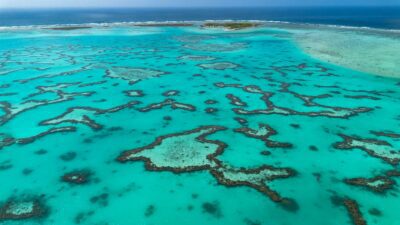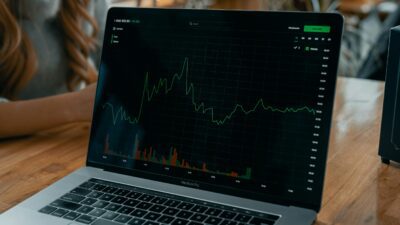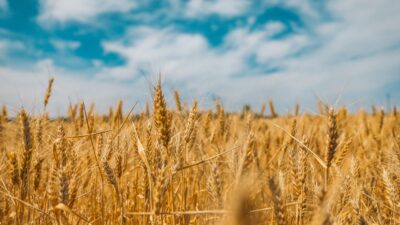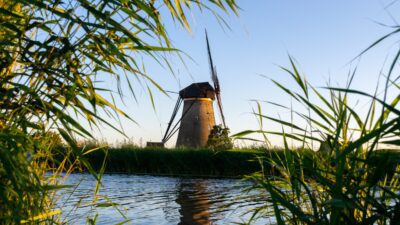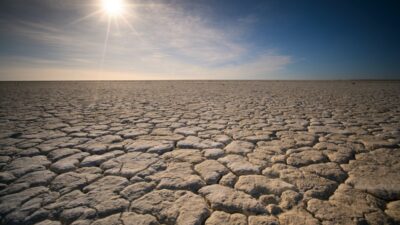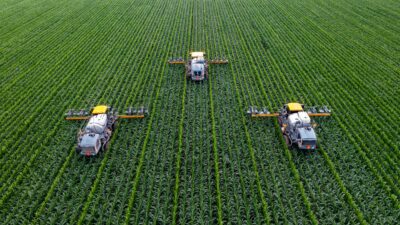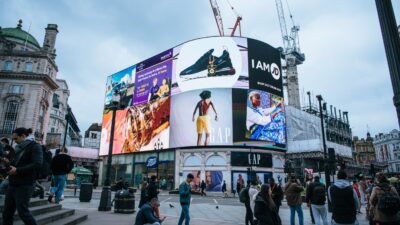Sydney Business Insights and Christopher Wright

What if: an ice-free Arctic 2027
Climate change changes everything – our economy, our society and the ecosystems that underpin life on Earth. In this what if episode we talk to Professor Christopher Wright to explore what an ice free Arctic Earth might look like in 2027 if we pursue our current business as usual.
Our what if podcasts are an invitation to imagine and explore complex implications of potential dramatic change on the future of business.
Show notes
Climate Change Blog by Christopher Wright
Book by Christopher Wright and Daniel Nyberg: Climate Change, Capitalism and Corporations
Research highlights (video): Having it all and avoiding climate disaster? Maybe not
Corporations and climate change on Sunday Extra: Ockham’s Razor
You can subscribe to our podcasts on iTunes, Spotify, Soundcloud, Stitcher, Libsyn, YouTube or wherever you get your podcasts. You can follow us online on Flipboard, Twitter, or sbi.sydney.edu.au.
Send us your news ideas to sbi@sydney.edu.au.
Sydney Business Insights is a University of Sydney Business School initiative aiming to provide the business community and public, including our students, alumni and partners with a deeper understanding of major issues and trends around the future of business.
Christopher Wright is Professor of Organisational Studies and leader of the Balanced Enterprise Research Network at the University of Sydney Business School. His research focuses on the diffusion of management knowledge, consultancy and organisational change.
Share
We believe in open and honest access to knowledge. We use a Creative Commons Attribution NoDerivatives licence for our articles and podcasts, so you can republish them for free, online or in print.
Transcript
Sandra Peter Introduction: Climate change changes everything. Our economy, our society and the ecosystems that underpin life on Earth. In this what-if podcast we explore what an ice free Arctic earth might look like in 2027 when we pursue our current business as usual. Our what-if podcasts are an invitation to explore the complex implications of potential dramatic change. These episodes imagine and explore potential futures.
Introduction: From the University of Sydney Business School. This is Sydney Business Insights, the podcast that explores the future of business.
Sandra: I'm Sandra Peter. And today we are talking to Professor Christopher Wright about climate change, business and what the world might look like in the future climate shock world. Christopher is a Professor of Organisational Studies at the University of Sydney Business School. Over the last 10 years he has been leading the major research project into how businesses respond to climate change and he's the author with Daniel Nyberg of the book Climate Change Capitalism and Corporations, Processes of Creative Self-Destruction. Welcome Chris.
Chris: Pleasure to be here.
Sandra: So Chris could we begin by discussing the current state of climate in 2027. Can you describe for us what the world's climate looks like?
Chris: Well it's looking quite grim in some ways if we think back to what the world looked like at the end of 2016 beginning in 2017. We had the indications that the world's climate was really starting to go seriously awry. We had temperature records in the Arctic 20 degrees Celsius above the norm, record lows in Arctic sea ice, Greenland ice pack melting, extreme weather events and really what we're seeing now is an extrapolation from those early signs of climate breakdown and it's got worse and probably what has surprised us is how bad it's got and how quickly it's got beyond the expectations that the IPCC and many climate scientists had at the time. So we've had these extreme weather events that have been pretty catastrophic and they are in some senses extrapolations of what we saw in the early 2000s the 2010s back then of course we had Superstorm Sandy flooding New York City in Lower Manhattan and we had Typhoon Haiyan devastating the Philippines. And we've really just in the last 10 years seen more and more of these extreme storms that have increased in intensity, they've increased in frequency and they're having a huge impact in terms of human mortality, the breakdown of civil society and some developing economies. Increasing numbers of climate refugees trying to get away from the rising seas and storms. And I suppose most worrying of all now towards the end of the 2020s is we're starting to see the tipping points come to fruition that many climate scientists prophesized may have an impact and may contribute to what they termed sort of runaway climate change.
Chris: So the key tipping points for me are essentially the Arctic, and ice free summers in the Arctic that we're now seeing which is turning the northern part of the planet into a heat sink essentially a dark ocean absorbing solar radiation whereas before it used to reflect back that solar radiation. The second one probably for me would be the Greenland melting. That is a pretty catastrophic tipping point because that feeds straight into sea level rise. And we're seeing that level of sea level rise in a nonlinear form now which poses real problems for coastal cities and then probably the third one and for me this is something of a deal breaker really is the venting of methane gas now from the frozen tundra in Siberia. The permafrost is now no longer permanent and we're starting to see the much more powerful greenhouse gas methane emitting from the soil and that it's a positive feedback, positive not in the good sense of the word positive in terms of a self-reinforcing climate forcing mechanism. And that poses real problems for our ability as a civilization to deal with this problem and try to head away from what is pretty clearly dangerous climate change.
Sandra: How is Australia faring in this climate?
Chris: Again Australia's position in 2027 or 2026 is pretty similar in some ways to where we thought it would be back 10 more years ago. Back then of course we had examples of unseasonal heatwaves and bushfires in Tasmania and Victoria and in the last 10 years we've seen more and more of these heatwaves and extreme fires in the summer. We used to call them wicked summers or particularly dangerous summers and they have increased in frequency. We've had some terrible bushfires in NSW and in Victoria and we're now starting to think about whether some of these rural communities are actually viable in a context of increasingly dangerous summers with out of control super fires that are beyond our capacity to deal with so we have to look at the triage possibility of moving away from particular locations. We've had more more extreme storms east coast of Sydney for instance. We've seen beaches go, we've seen properties go, that's linked to not just the storms but the sea level rise that is now starting to ramp up. And again the adaptation response I guess is to think well maybe we have to think about moving people and development away from those locations. And then of course we've also had the terrible examples of seasonal coral bleaching of our major reefs. So the Great Barrier Reef is now looking fairly terminal. We first saw this developing again about 10 years ago with that first instance of dramatic coral bleaching which killed essentially about a quarter of the reef and that has only accelerated. Linked to El Nino events, which have just ramped that up even further.
Chris: And I suppose the other thing that didn't get much coverage at the time has been the terrible die off of mangroves up in the tropical north which has huge implications for erosion etc.. So we're basically starting to see fundamental ecosystems breaking down. And this is getting to a stage where it's almost beyond our capacity to respond to in terms of ameliorating the impact, let alone trying to reverse the impact.
Sandra: How did we end up here?
Chris: Well we've basically got to this situation because we've failed as a species, as a civilization, as a global society, to deal with this as a serious existential threat. We knew as far back as the 1970s that anthropogenic climate change, climate disruption, that is, the way in which we've used fossil fuels (coal, oil and gas) as our major source of energy and power. That allowed us for two centuries to industrialize and develop the thriving global economy that we have. But it came also with a huge cost that we were basically changing the chemistry of the atmosphere and the oceans in fairly fundamental ways. And if we just look at one indicator of that: the concentration of CO2 in the atmosphere in parts per million. Pre the industrial revolution it was around 280 parts per million. By about 2010 2016 it had gone over 400 parts per million. And we're now pushing at 420 parts per million and we haven't really seen those sort of levels in the geological record, going back probably three to four to five million years well before the evolution of humans as a species so we're now in a climate, an Anthropocene as it's often termed, which is vastly different from the hollow's scene in which Humans evolved and we're not really dealing with it particularly well so we have an economic system still hooked to a large extent on fossil fuels and we failed essentially to move ourselves away from those fossil fuels at sufficient pace to mitigate those emissions. And now these are the natural effects of changing that chemistry.
Sandra: How are businesses responding to this change in climate?
Chris: Well there are both winners and losers. I might start with the losers first I guess because there are a lot. Clearly any business which has physical infrastructure which is open to the elements is now having to deal with extreme weather events of increasing frequency and ferocity. Big resource companies are busily trying to weather proof their big mine sites, their ports through engineering projects to deal with sea level rise and storms to deal with the sort of disaster response that is needed. Insurance companies are suffering mightily with massive claims for floods and storms that they have to deal with. The banking industry linked to that, they are exposed in terms of their loans and their investments. There is a lot of carnage across the corporate landscape. The other big losers of course are some of the fossil fuel sector. So although we haven't really responded sufficiently in decarbonizing our global or our national economies. It was pretty clear 10 years ago that there was a significant shift happening in the energy sector a movement away primarily from coal towards gas and then renewables.
Chris: And so the coal industry has continued to decline as major countries that we export to China and India and to a lesser extent Japan have moved away from coal. And move towards renewables gas and nuclear. And so the coal industry Australia which we've really relied on historically has shrunk significantly as a source of employment and growth. On the winners side I guess, we can look at industries like the renewable energy sector which has gone ahead in leaps and bounds. Led by the developments that are happening in China. Which has become the global leader in solar and wind. And nuclear as well. And you have companies like Tesla which 10 years ago were just sort of emerging their electric vehicles and their battery storage.
Chris: And they've gone on to become true global players probably one of the largest companies in the world now based on their vision of a renewable energy infrastructure and also big wind turbine manufacturers that sort of thing. So there's been a huge boost in growth in renewable energy, a growth in green finance. These are good things but they're not sufficient to sort of deal with the scale of the problem we've now got. The other big winners probably in a more negative sense I guess are the military industrial complex if you look at the big armaments manufacturers, the security firms there's been massive armaments spending in the US and Europe in response to some of these geopolitical conflicts we've seen in the Middle East and in the subcontinent, driven by the movement of large numbers of people. And so companies that are producing armaments that are in the security industry have got a booming demand for their products and services so not necessarily a good thing but they are doing quite well out of the increasing social economic chaos we're seeing in large parts of the world.
Sandra: Chris where do you see us going in 10 years?
Chris: Essentially where we are now is not a particularly great spot. We've managed some level of greenhouse gas emissions mitigation. There has been this separation of gross domestic product, economic growth, and carbon emissions driven by the shift towards renewables and to a lesser extent gas and away from coal. And that's good and unfortunately however that level of decoupling as it's termed isn't sufficient to avoid dangerous climate change. So it seems pretty clear that we are going to go beyond 2 degrees C which was the politically defined target of dangerous climate change 10 years ago. And we're on target to do that probably in about 10 years. Then the question becomes well can we avoid 2.5 degrees, three degrees, three point five, four degrees because each of those is worse than their predecessor. Two degrees is terrible. Two degrees is not good but 2.5 degrees is a whole lot worse and we need to maintain and continue to try and mitigate that danger. Having said that what I see essentially is a continuation of those who are wealthy and in prosperous countries probably putting up fences and walls to try and insulate themselves from some of these implications particularly the mass migration of climate refugees. You have seen that in the US and Australia. So this polarization between the rich and the poor both globally and also probably at a national level where the rich will try to sort of insulate themselves from the crises that are happening. The other big trend is that despite our awareness that fossil fuels are the problem we're still locked in to a certain degree to the fossil fuel extraction business and the melting of the ice and the Arctic is a great example of that. We've got businesses the big oil companies Exxon, Shell, BP, Gazprom others which have basically brought us the ice free Arctic. They've melted the ice in the Arctic and now they're rushing in to drill for the oil and the gas and to mine for the gold and all the other resources in the ice free water they can now access. So it's as we sort of argued in our book, it's a great example of this idea of creative self-destruction. We know we shouldn't be doing this. We know we're destroying ourselves and yet we double down on the bed and we innovate and we find new ways to try and access these resources which give us cheap and easy energy but at a huge social economic and environmental cost.
Sandra: Chris thank you for talking to us today.
Chris: My pleasure.
Sandra: This has been a what-if podcast. Our what-if episodes imagine and explore potential futures such as what an ice free Arctic earth might look like in 2027 when we pursue our current business as usual.
Outro: You've been listening to Sydney Business Insights, the University of Sydney Business School podcast about the future of business. You can subscribe to our podcast on iTunes, Soundcloud or wherever you get your podcast and you can visit us at SBI.sydney.edu.au and hear our entire podcast archive, read articles and watch video content that explore the future of business.
Close transcript
